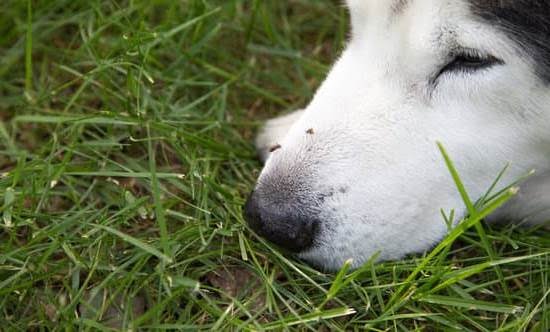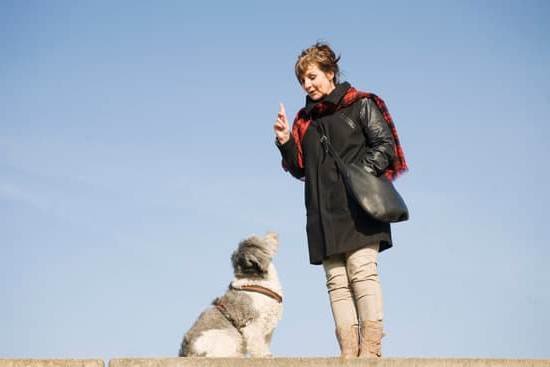Introduction
Training a dog in a cage is the use of an enclosure or confinement area to teach and reinforce desirable behaviors. This technique can be used for puppies and adult dogs to teach them self-control, appropriate play and socialization skills, enrichment activities, potty training, protection training and obedience commands. It not only serves as a safe way to manage the learning environment but also provides mental stimulation and physical activity while avoiding destructive behaviors like chewing furniture or digging up the garden. Dogs can benefit greatly from this type of training as it gives positive reinforcement and consistency when teaching the desired behaviors. The structure of a cage helps with setting boundaries, providing reward after successful behavior so that owners can be assured that their canine companion understands what is required of them. The goal is to make sure that training sessions are enjoyable and rewarding which in turn will result in happier dogs who look forward to training time instead of being pushed away due to lack of understanding.
Benefits of Training in a Cage & Choosing the Right Cage
Training a dog in a cage can provide numerous benefits for both the pet and the owner. When dogs are put into a cage, their natural instincts of containment will take over, resulting in more controlled behavior and less mischievousness at home. This makes it easier for owners to leave their animals unattended without worrying about any misbehavior or accidents.
When it comes to choosing a suitable cage for your pooch, size is essential. It needs to be big enough for them to move around so that they can express their need for exploration and play comfortably, but small enough to restrict movement when necessary. The walls should also be constructed out of materials that are easy to clean and unlikely to cause injury, such as vinyl or wood-covered wire mesh. Not only that, but there should also be ventilation holes and multiple compartments, allowing you to adjust the space accordingly and separate items as needed throughout training sessions. Adding toys or treats inside will help keep your pup stimulated while they’re inside.
Apart from providing an ideal space for obedience training or potty-training sessions, cages can also double up as secure transport containers or preventative measures against destructive behavior when required. Cages should always be viewed positively by owners – after all, having one does not necessarily mean you don’t care about your pup’s wellbeing; rather, it helps establish order and provides them with comfort during difficult times!
Establishing Good Habits & Giving Clear Instructions in the Cage
When training your dog in a cage, it is important to establish good habits and give clear instructions. Start by ensuring your dog is comfortable in the crate; place treats and toys inside for him to enjoy. Slowly increase the time your dog spends in there, so he does not become overwhelmed. When you let him out of the cage, reward him with lots of praise and affection for being patient and playing by the rules.
You should also ensure that you are giving clear instructions. Before letting your dog into the cage, make sure he knows what you expect from him while he’s inside. Let him know his expectations like no barking or clawing at the sides of the enclosure. Make sure to enforce these rules consistently throughout training, such as praising and rewarding when he follows them properly. Also be consistent with the commands you use even when asking your dog to stay or come out of his crate. Having consistent routines will help keep distractions down while also helping your pup comprehend what actions will get him rewards. Lastly, never keep your pup in their crate for periods longer than an hour- this can cause stress or boredom that may be difficult to undo during future trainings!
Utilizing Positive Reinforcement to Teach Basic Commands
Training a dog in a cage can be an effective and gentle way to enforce obedience. It is important to ensure that the training environment is safe and secure to keep both the trainer and the dog relaxed and focused. Additionally, trainers should use positive reinforcement training methods to train dogs in cages, as punishment-based training is not only ineffective but can prove harmful if done incorrectly.
Positive reinforcement relies on consistent, polite praise and treats when dogs follow commands correctly. Begin by rewarding your pup for simple behaviors such as simply sitting or lying down in their cage on command. As your pup’s understanding of the commands increases, you can build upon other basic skills such as “come” or “stay” with rewards like verbal praise or treats when they do well. Eventually you can add distance commands where you move away from the cage while yelling commands to remind them of their boundaries. Make sure to reward them instantly after following the command with verbal affection and snacks for good behavior. Over time, this will help your pup understand how to obey words even if your presence isn’t immediately present in the same space.
Adapting Training to Different Environments
Training a dog in a cage can be quite a challenge. It is important to remember that the frustration of being cooped up in an unfamiliar space could make the dog more resistant to training than normal. To ensure success, it is important to begin by adapting your training plan to the environment. Start with shorter training sessions and keep them fun and engaging, using positive reinforcement techniques like treats and praise. This can help build your dog’s enthusiasm for learning. Remember that being confined in one space may limit the ways in which you can practice obedience; consequently, try repeating commands several times for reinforcement until your pet’s behavior becomes consistent. When practicing leash walking or other more complex tasks, lead from outside of the cage slowly introducing new elements one at a time as your pup gets comfortable with each step of the process. Additionally, if possible allow some physical activity before training to help release extra energy and get them into a learning mindset. Above all, changing up lessons and providing plenty of stimulation during breaks can help prevent behavioral regression and make sure that your experience together remains positive!
Providing Opportunities for Physical & Mental Stimulation in the Cage
The key to successfully training a dog in a cage is providing them with mental and physical stimulation. Before beginning any training, first assess the dog for any health issues, such as obesity or joint problems, and work with your vet to establish a helpful nutrition and exercise plan that supports good health. Then it’s vital to provide opportunities for mental stimulation by giving the dog toys, puzzles, and chew treats that can be used in the cage. You can also use food-dispensing toys which require the dog to figure out how to get food out of them. This type of activity is stimulating and builds confidence in problem-solving skills.
Physical exercise is also important inside the cage; create an obstacle course within their limited space using tunnels, elevated platforms, tire jumps, etc., that allow the dog’s body to be fully engaged while having fun. This not only provides enjoyable physical stimulation but also creates a positive bond between you and your pet as they look forward to having you around to play in their special area. For those dogs who are more set in their ways you can add more traditional commands such as ‘sit’ or ‘down’ but be consistent with praising your pup every time they perform correctly which will motivate further learning sessions!
Troubleshooting Common Issues & Seeking Professional Help
When training a dog in a cage, it’s important to provide them with the right level of routine, exercise and attention. Dogs react better when given clear boundaries and expectations, so part of training involves setting rules and providing consistent reinforcement when they follow them. It’s also helpful to gradually get them used to their environment by introducing toys, treats or other forms of positive reinforcement. Doing this helps to create a sense of security and builds trust between you and your pup.
Unfortunately, there may be times when your pup’s behavior causes problems that can’t be solved on your own. A dog may develop problematic behaviors like barking excessively or developing aggressive tendencies due to boredom or lack of stimulation in the confined area. In such cases, seeking professional help from an animal behaviorist may be necessary to identify the underlying issues causing bad behavior and creating a plan for making progress toward improvement. Additionally, it’s important to identify any medical conditions that could be triggering behavioral shifts — these need their own targeted approaches that involve additional care from trained veterinarians. By understanding what could be causing the problem, you can then work with professionals to implement correct treatments that will improve your pet’s quality of life.
Conclusion
In conclusion, training a dog in a cage is not necessarily difficult, but it does require patience and dedication. Although there are several approaches to do so, creating a positive learning environment by using treats and commands should be your main approach. As you spend time training your dog in the cage, make sure to reinforce good behaviors and reward successes with plenty of praise and affection to help them build trust in their owner. When used correctly, making use of an animal cage for pet-training can be highly beneficial for your canine friend for the long run. Therefore, if possible and practical, consider investing in such an investment as soon as possible.

Welcome to the blog! I am a professional dog trainer and have been working with dogs for many years. In this blog, I will be discussing various topics related to dog training, including tips, tricks, and advice. I hope you find this information helpful and informative. Thanks for reading!





